All products featured are independently chosen by us. However, SoundGuys may receive a commission on orders placed through its retail links. See our ethics statement.
Best cheap noise canceling earbuds
May 15, 2025
These days, you don’t need to spend a lot of money to get great noise canceling earbuds. There are now lots of great noise cancelling earbuds under $100, and even some decent options under $50. If you want to block out the world around, while listening to music on the go, then noise canceling earbuds are the perfect choice for you. We’ve tested dozens of earbuds in our SoundGuys testing lab to determine which are worth buying. Below, we’ve highlighted our top budget ANC earbud picks, as well as a few notable mentions.
- May 15, 2025: Added Sony WF-C710N, Soundcore Liberty 5, Liberty 4 NC, EarFun Air Pro 4, and CMF Buds 2 Plus. Removed the outdated Soundcore Space A40, Jabra Elite 4, EarFun Free Pro 3, Amazon Echo Buds (2nd Gen), Jabra Elite 4 Active, JBL Club Pro Plus, JBL Live Free 2, LG TONE Free FP8, LG Tone Free FP9, Samsung Galaxy Buds 2, Sennheiser CX Plus True Wireless, Sony WF-C700N, TOZO NC2, Beats Studio Buds.
- April 1, 2024: Added a section on the Moondrop Space Travel
The Quick Answer
For a quick guide to the best cheap ANC earbuds that suit your needs and budget, check out our top picks below. Each has a link to our full review.
The best overall:
The best for bass:
The best for features:
The best ANC:
The best under $50:
The best for small ears:
The best under $30:
The In-depth Answer
Below you’ll find our in-depth coverage of each of the best cheap noise canceling earbuds. Each model has been rigorously tested, ensuring you can trust our recommendations.
The Anker Soundcore Liberty 4 NC are the best cheap ANC earbuds


The Anker Soundcore Liberty 4 NC are a standout pick for anyone looking to get solid active noise cancelation (ANC), long battery life, and deep bass without spending a fortune. At under $100, these earbuds punch well above their weight, offering nearly 10 hours of playback with ANC enabled and a total of about 50 hours with the charging case. In our testing, the adaptive ANC did a great job taming ambient noise, with an average reduction of external noise of 84%. The default sound profile leans heavily into bass and bright treble, which works well for pop and dance tracks—though EQ customization in the excellent Soundcore app lets you dial things in to your taste.
Despite a slightly chunky case and average comfort, the Liberty 4 NC remain a great value. You get extras like wireless charging, LDAC support for Android users, Bluetooth multipoint, and highly customizable touch controls. They’re not ideal for workouts despite the IPX4 rating, but for commuting, casual listening, or working from home, they more than hold their own. If you want affordable earbuds with premium-tier features, the Liberty 4 NC should absolutely be on your shortlist.
Read our full Anker Soundcore Liberty 4 NC review
The Skullcandy Rail ANC are great if you love bass
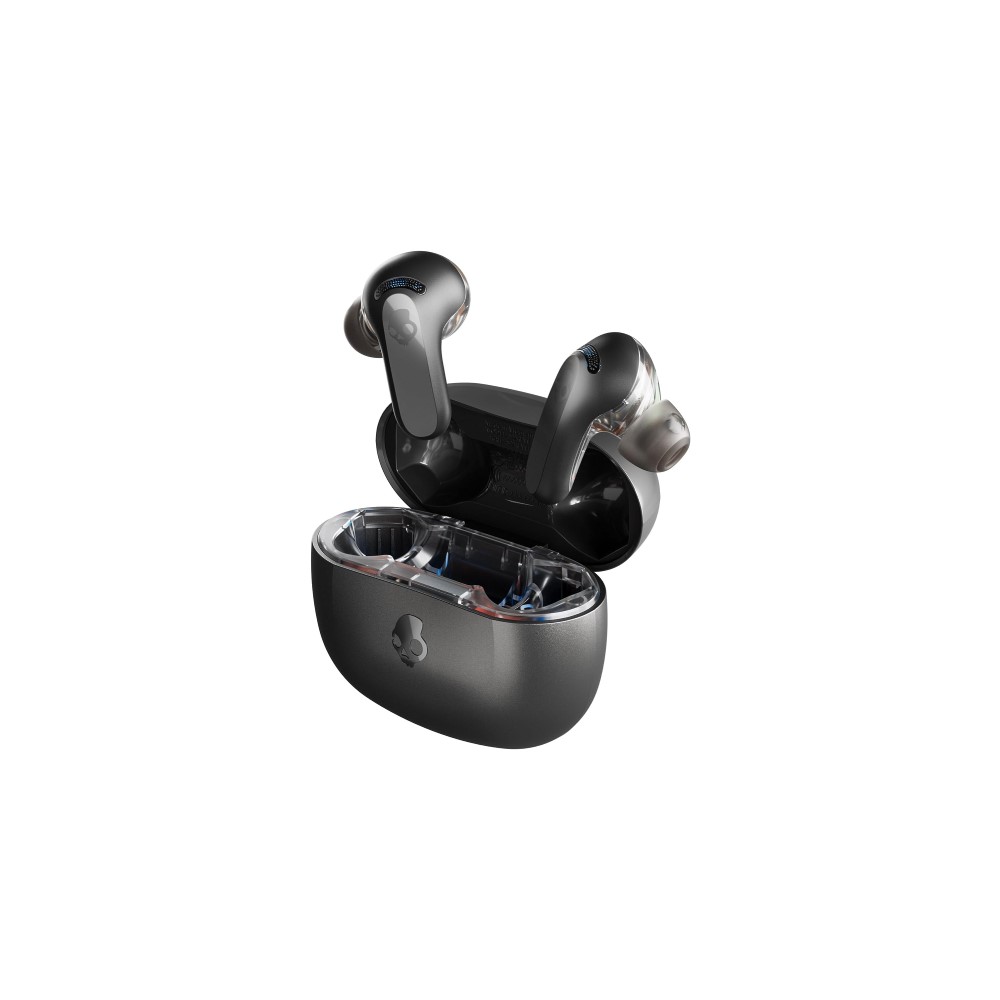

If you can get along with the chunkier size, these earbuds are quite comfortable and offer reliable touch controls and decent noise cancelation. They also bring good functionality and a useful companion app.
The Skull iQ app not only includes Tile for tracking your buds but also has a special mode called Personal Sound by MIMI, which basically measures your hearing and “optimizes” the EQ for your unique hearing, which can help mediate the excessive bass they by default.
For under $100, the combined ANC and isolation do a solid job of getting rid of pesky low-pitched rumbles, though they won’t eliminate the whooshing of cars accelerating noisily entirely. In our testing, the noise canceling of the Skullcandy Rail ANC reduces outside noise by 80%. With over seven hours of battery life, we can’t spot any glaring flaws in these earbuds.
Read our full Skullcandy Rail ANC review
The EarFun Air Pro 4 are packed full of features

The EarFun Air Pro 4 raise the bar for what you can expect from budget earbuds. With a $90 price tag, they deliver impressive sound quality, support for high-end Bluetooth codecs like LDAC and aptX, and a customizable listening experience via a well-designed app. In my testing, these earbuds were comfortable for long sessions, and I was especially impressed by the new 10-band EQ and “My Sound” profile that tailors the audio to your hearing. Battery life clocked in at nearly 9 hours per charge, and wireless charging adds a premium touch. You even get Bluetooth 5.4 with multipoint and low-latency gaming mode—features rarely seen in this price range.
Noise canceling has also seen a real upgrade over the previous generation. The EarFun Air Pro 4 offer five ANC modes including adaptive and wind-specific options. While ANC does slightly alter the sound signature—dropping bass with ANC off—it’s easy to correct via the EQ. Our testing shows that the EarFun Air Pro 4 blocks out 75% of external noise with the ANC set to its max setting. Microphone quality is average in noisy settings, but the call quality remains serviceable. Overall, these earbuds feel like they belong in a higher price tier. If you want feature-packed, great-sounding earbuds without paying flagship prices, the EarFun Air Pro 4 are an easy recommendation.
Read our full EarFun Air Pro 4 review
The Sony WF-C710N have the best ANC of any affordable earbuds


The Sony WF-C710N offer a solid alternative to the brand’s premium WF-1000XM5 earbuds, delivering surprisingly strong ANC, well-balanced sound, and a comfortable fit at half the price. During my week of testing, I found the battery life impressive at over 9 hours of playback, and the ANC performance genuinely effective. According to our testing, these earbuds block out up to 85% of outside noise, which is the best of any wireless earbuds in this price category. While the translucent blue version may be polarizing, the compact, stemless design sits comfortably for long listening sessions—though it’s not secure enough for workouts. These earbuds sound great out of the box, and the app lets you fine-tune the EQ or even experiment with Sony’s 360 Reality Audio (if your streaming platform supports it).
However, the lack of high-quality Bluetooth codecs like LDAC or aptX is a notable omission, especially for Android users. The WF-C710N stick to AAC and SBC, which is fine for casual listening, but limits high-res potential. Still, with strong microphone performance, reliable connectivity, and excellent noise canceling for the price, the WF-C710N easily earn their spot as one of the best mid-range earbuds on the market. If you’re not ready to splurge on Sony’s flagship buds but want more than budget-tier performance, these are a smart buy.
Read our full Sony WF-C710N review
The Edifier TWS1 Pro 2 is the best bang for your buck


For only $50, there’s a lot to like about the Edifier TWS1 Pro 2. It’s rare to find quality wireless earbuds at this price, let alone ones with ANC, water resistance, and a good companion app. They are durable enough for the gym and portable enough to toss in any bag. According to our measurements, the noise canceling reduces outside noise by an average of 76%, which is very good considering the low price.
The default sound is suitable for most casual listeners, though there is an emphasis on the bass region at the expense of mid-range frequencies. If you don’t enjoy the default sound, you can select from 3 other equalizer presets in the app: pop, classical, and rock to match your preferred music genre.
The battery life isn’t the best, lasting just over four hours, so don’t expect these earbuds to last more than a few years. However, considering you can buy half a dozen of these for the price of most premium earbuds, this isn’t a big enough drawback to prevent a recommendation.
Read our full Edifier TWS1 Pro 2 review
The 1MORE ComfoBuds Mini are great for small ears and pockets

Stepping up as one of the more unassuming sets of earbuds on the market, the 1MORE ComfoBuds Mini proves that size isn’t everything. The highly pocketable case weighs merely 34.9 grams, and the slight buds weigh a very light 3.7 grams each.
Somehow, 1MORE manages to ensure the ComfoBuds Mini is IPX5-rated and provides really good ANC in that wee package. For instance, noises from 400Hz down to 30Hz are comprehensively attenuated by up to 35dB. Isolation is the main obstacle for the ComfoBuds Mini. Owning to its minute size, folks with larger ears may find that it does not isolate as well as some of our other picks. As a remedy, you may consider some memory foam ear tips as an added purchase.
Interestingly, the ComfoBuds Mini sounds different depending on which mode you listen in. Without ANC turned on, it gets quite close to our ideal sound, but with ANC on, it bumps up low-end instruments by 3 to 5dB, which is a bit odd. People who like a bit more oomph likely won’t complain. The 1MORE MUSIC app has a customized tool that analyzes your ears to adjust the EQ how 1MORE sees fit. There’s no equalizer in the app. However, a third-party option may be in the cards for you if you don’t jive with what the app determines. Generally, it sounds good to most listeners.
With a battery life of 5 hours and 19 minutes on a single charge, the 1MORE ComfoBuds Mini battery lands in the ballpark of average for ANC earbuds. Suppose you can live with Bluetooth 5.2 delivering AAC and SBC codecs only (sorry, Android users, there’s no aptX here). In that case, the 1MORE ComfoBuds Mini delivers surprisingly good noise filtering for low-rumbling noises and feels more expensive than the price suggests.
Read our full 1MORE ComfoBuds Mini review
On a tight budget? The Moondrop Space Travel are excellent value for under $30
The Moondrop Space Travel earbuds offer excellent value for budget-conscious buyers looking for decent noise cancellation. Despite their affordable $24.99 price tag, these earbuds feature surprisingly effective active noise cancellation (ANC) that can attenuate outside noise by an impressive 20dB. While the ANC performance won’t match top-tier models, it’s still remarkably good for the price point.
Additionally, the Space Travel earbuds deliver outstanding sound quality, with consumer-friendly tuning and high MDAQS results for timbre, distortion, and immersiveness. Other notable strengths include a comfortable fit thanks to their short nozzle design and good battery life for the price range. While the charging case leaves much to be desired, and the earbuds lack water resistance, the Moondrop Space Travel emerges as a solid budget option, offering great noise cancellation and audio fidelity for under $30.
Read our full Moondrop Space Travel review
The best cheap noise canceling earbuds: Notable mentions
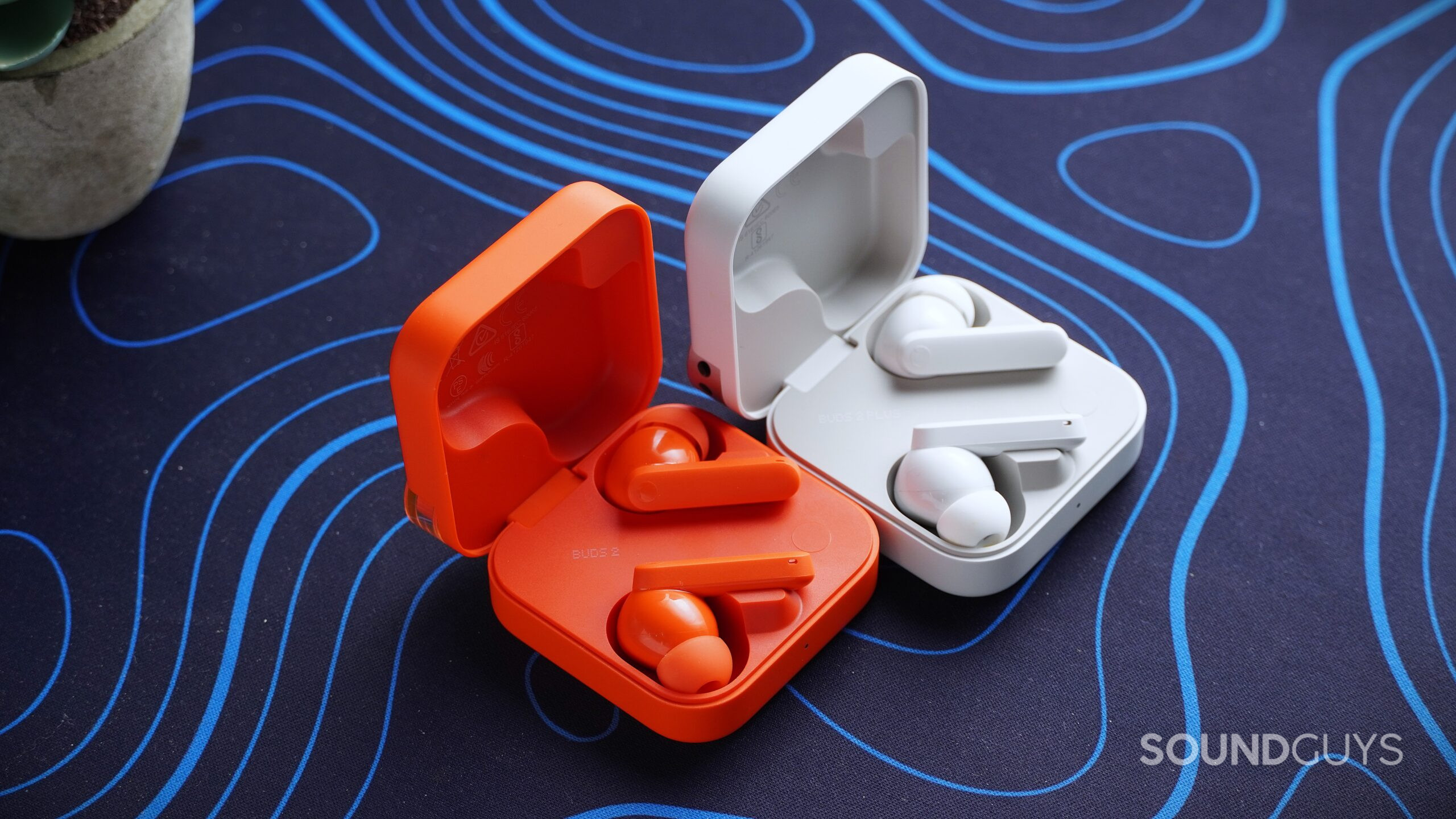
- CMF Buds 2 ($59 at Amazon): The CMF Buds 2 deliver exceptional value at $59 with noise canceling that blocks out 82% of external noise.
- CMF Buds 2 Plus ($69 at Amazon): A step up from the CMF Buds 2 in sound quality and noise canceling is the more expensive CMF Buds 2 Plus.
- EarFun Free Pro 3 ($79.99 at Amazon): The EarFun Free Pro 3 are affordable noise canceling earbuds that reduce the loudness of external noise by an average of 76%.
- Nothing Ear (a) ($95 at Amazon): The Nothing Ear (a) have a lot of features, but our testing shows the ANC only reduces the loudness of external noise by 57%.
- SoundPEATS Capsule3 Pro+ ($89.99 at Amazon): The SoundPEATS Capsule3 Pro+ are slightly more expensive than the other options on this list, but they deliver excellent sound quality thanks to their innovative xMEMS drivers.
Take our quiz to find your best fit
If you’ve been waiting for active noise canceling (ANC) technology to get better and then trickle down into some less expensive earbuds, the time has come. These days, you can save your pennies and still get some pretty good noise canceling earbuds for cheap. We’ve pierced the veil of marketing lingo and have identified which cheap ANC earbuds are the best out there. After all, who doesn’t love a deal?
What you should know about the best cheap noise canceling earbuds
As with anything “cheap,” you ought to expect to make some concessions because it’s not just hype and marketing that differentiates the best (and more expensive) ANC earbuds from the rest. You might’ve noticed that some of our picks for the best list aren’t from the most instantly recognizable brands, and that doesn’t mean the quality is worse, only that you aren’t paying for the cachet of, say, Apple. Sure, the reputation of Bose or Sennheiser (for instance) is well earned because their products are consistently pretty good. Rest assured, we’ve tested these choices out, so you don’t have to gamble. Cheap ANC earbuds are a boon for all of us, but we want to make sure you don’t misstep and buy the wrong ones.
Bear in mind that with budget-friendly ANC earbuds, you probably won’t get everything you want, but you can get close. You may get great ANC, but maybe the app isn’t the best, or the controls have some limitations that premium sets aren’t hampered by, or maybe the mic is a weak point. Here, we’ve tried to round up some options to cover most priorities. If you’re an Android user, you might have to dig a little to get something with codecs other than AAC or SBC. At this point, you’d be hard-pressed to find anything good with spatial sound on a budget. However, technology has improved vastly in recent years, so you can find some gems for not much money.
If you wonder why you should care about ANC, consider that the less interference from the outside world your music competes with, the lower you can keep your volume to hear your music. If your volume remains at a safe level, then you have a much better chance of avoiding noise-induced hearing loss. Additionally, some folks use noise canceling earbuds as a way to better focus on a task by muting the distractions of a less-than-ideal environment.
How does in-ear fit affect isolation?
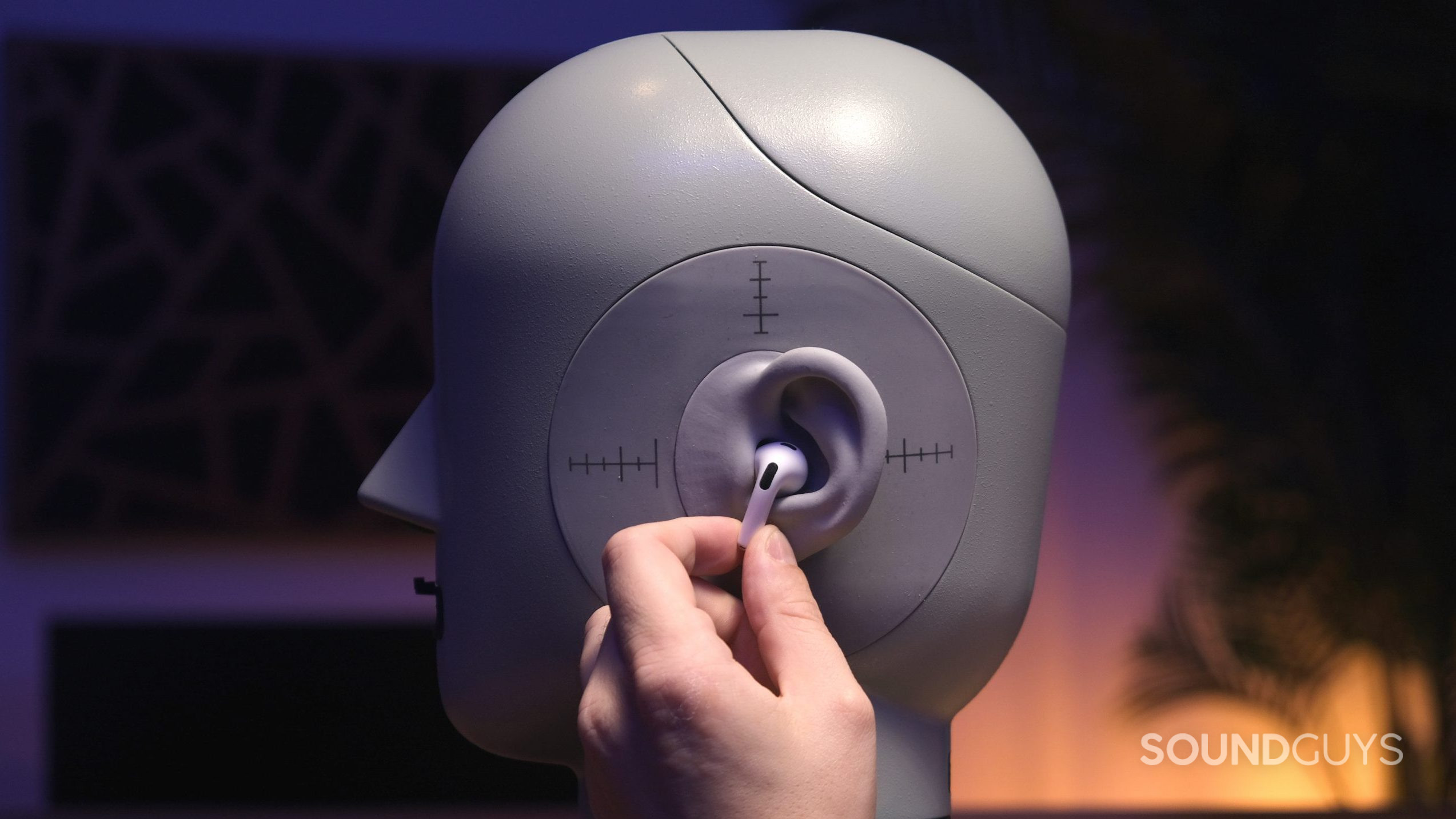
Any time you cover your hands over your ears or plug them with fingers, that’s isolation — it’s the oldest and cheapest way to block out sounds. It works best on high frequencies and incidental noises like baby cries or crashing plates. If you look at any of our charts measuring isolation, you’ll see how its effectiveness tapers off towards the lower frequencies. SoundGuys uses the industry standard Bruel & Kjaer 5128 test head (which was designed using models of 40 different sets of ears) to measure isolation.
What differentiates good isolation from poor isolation is your in-ear fit and the sound-dampening qualities of your ear tips. Some cheap earbuds don’t have the best fit. When they do fit, that can be because the companies aren’t creating new earbuds whole-cloth. Still, rather, they recycle already successful designs from more expensive products onto cheaper versions later. Sometimes, a new product comes out, and the formerly expensive one drops in cost too.
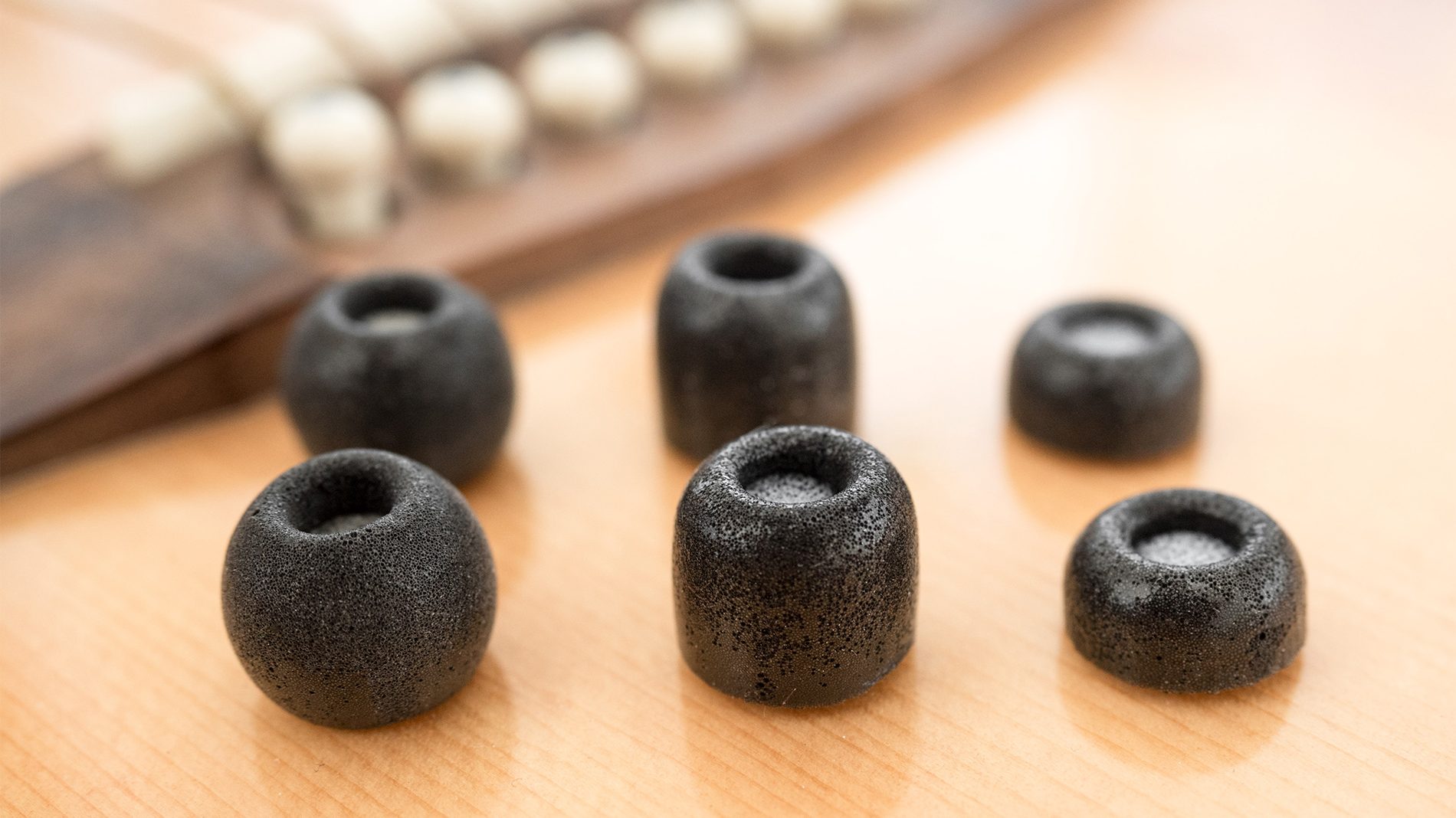
Hinging your fit entirely on an ear tip can make it difficult to stay in place. So, stabilizers and ear hooks can help lock in your isolating fit, but for some, it comes at the price of comfort. A stabilizer may provide a secure isolating fit in theory, but if it feels bad in your ears, you probably won’t want to wear it at your desk. However, you might compromise and wear the buds if you plan on going for a jog.
Finally, fit can come down to ear tip size selection and material quality. Typically, cheap earbuds supply only three sets of ear tips — the bare minimum. Sometimes, one of those three works well. Indeed, more expensive earbuds tend to have fit tests included with an app and a greater selection of ear tips. With cheap ones, you’ll need to rely on your perception to navigate the fit. In the ideal world, your ear tips will be made of polyurethane foam (like on the Sony WF-1000XM4), which conforms well to the contours of your ear, lending better isolation. However, most cheap (and frankly, a lot of expensive) ANC earbuds only provide silicone ear tips. An inexpensive way to improve isolation is to purchase third-party foam ear tips for whatever ANC earbuds you own. Isolation and fit are the first pieces of the noise canceling puzzle.
ANC is the expensive part of your cheap noise canceling earbuds
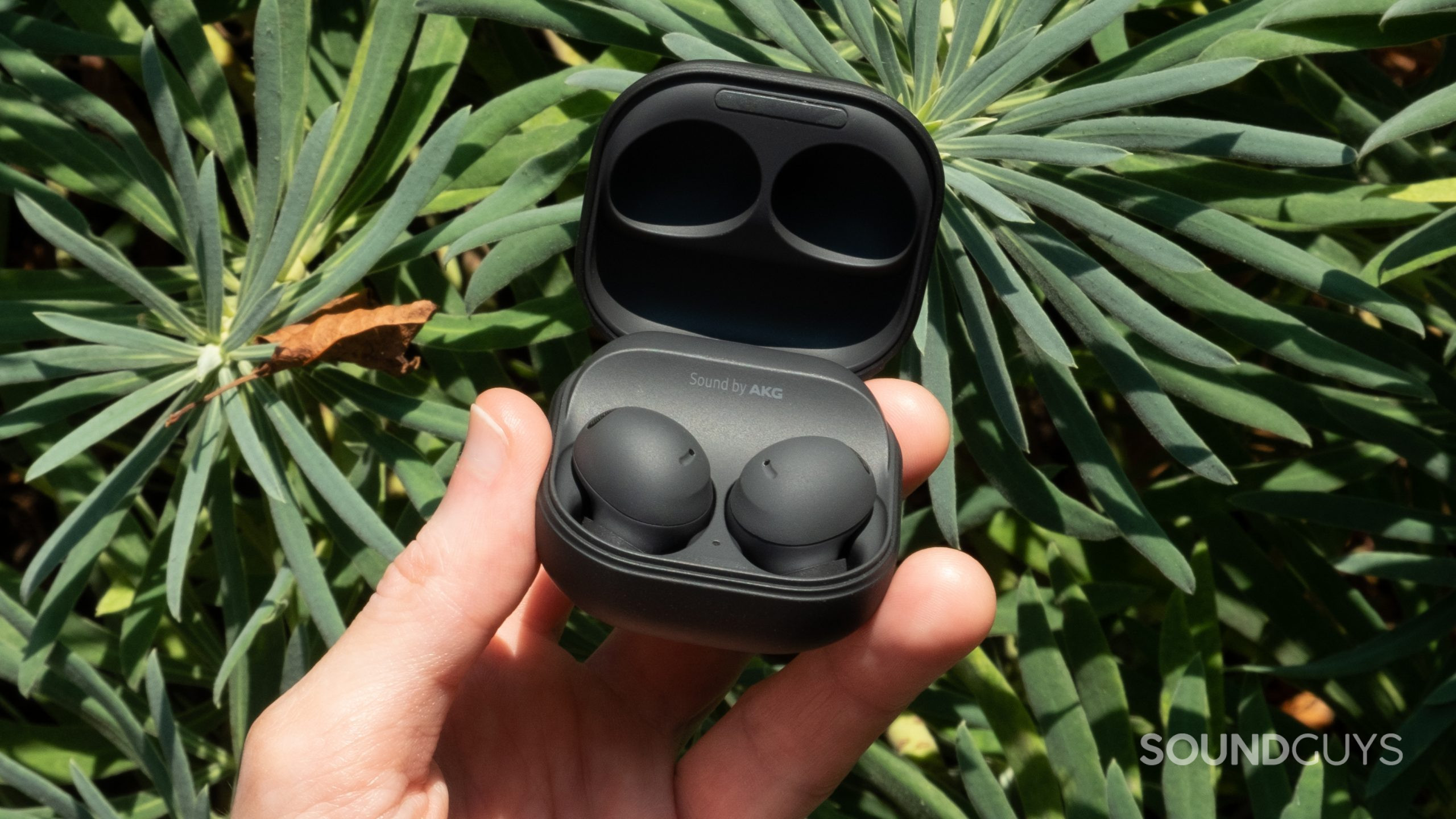
Like all tech-heavy tasks, ANC really impacts the overall cost of earbuds and taxes the battery life of units. So, it has only been recently that we’ve seen good ANC in cheap earbuds. Generally, the difference between cheap and pricey ANC earbuds is how well the ANC works. That’s not always true, though, and sometimes, we find some surprisingly good units.
If isolation blocks mainly high-pitched sounds, ANC typically seeks to filter out those middle-to-low-pitched noises. This is how the two best work in concert to reduce noise reaching your ears. The basic principle behind ANC utilizes the mic system in your earbuds to capture the environment’s sounds. It uses an “out-of-phase” version of the waveform to essentially “cancel” out the noise.
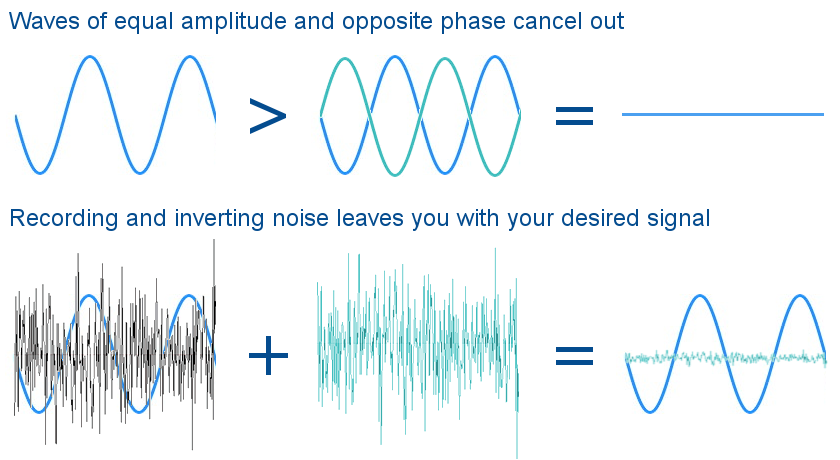
By its nature, ANC works best at handling repeating sounds, in which the waveforms continue at length, and the ANC system cascades one similar sounding “out of phase” waveform into the next. In real-world terms, think of the low hum of an air conditioner or the din of an airplane. Also, ANC tends to struggle with fast, incidental noises that peak and disappear quickly. There are different types of ANC, but the basic method remains the same.
ANC is a complicated enough task and relatively new, so we see the greatest differences between new and old ANC units and flagship and budget units. When compared to decades of research and design behind studio headphones (for example), through which the differences between cheap and expensive studio headphones eventually lead to diminishing returns, the gap between budget ANC earbuds and premium ANC earbuds is more striking. You can expect your wallet-friendly ANC earbuds to attenuate some noise but not necessarily do it as well as the latest top-tier ANC earbuds. Conversely, your brand new budget noise canceling earbuds may outperform last year’s flagship because the technology rapidly improves each year.
How we test the best cheap noise canceling earbuds
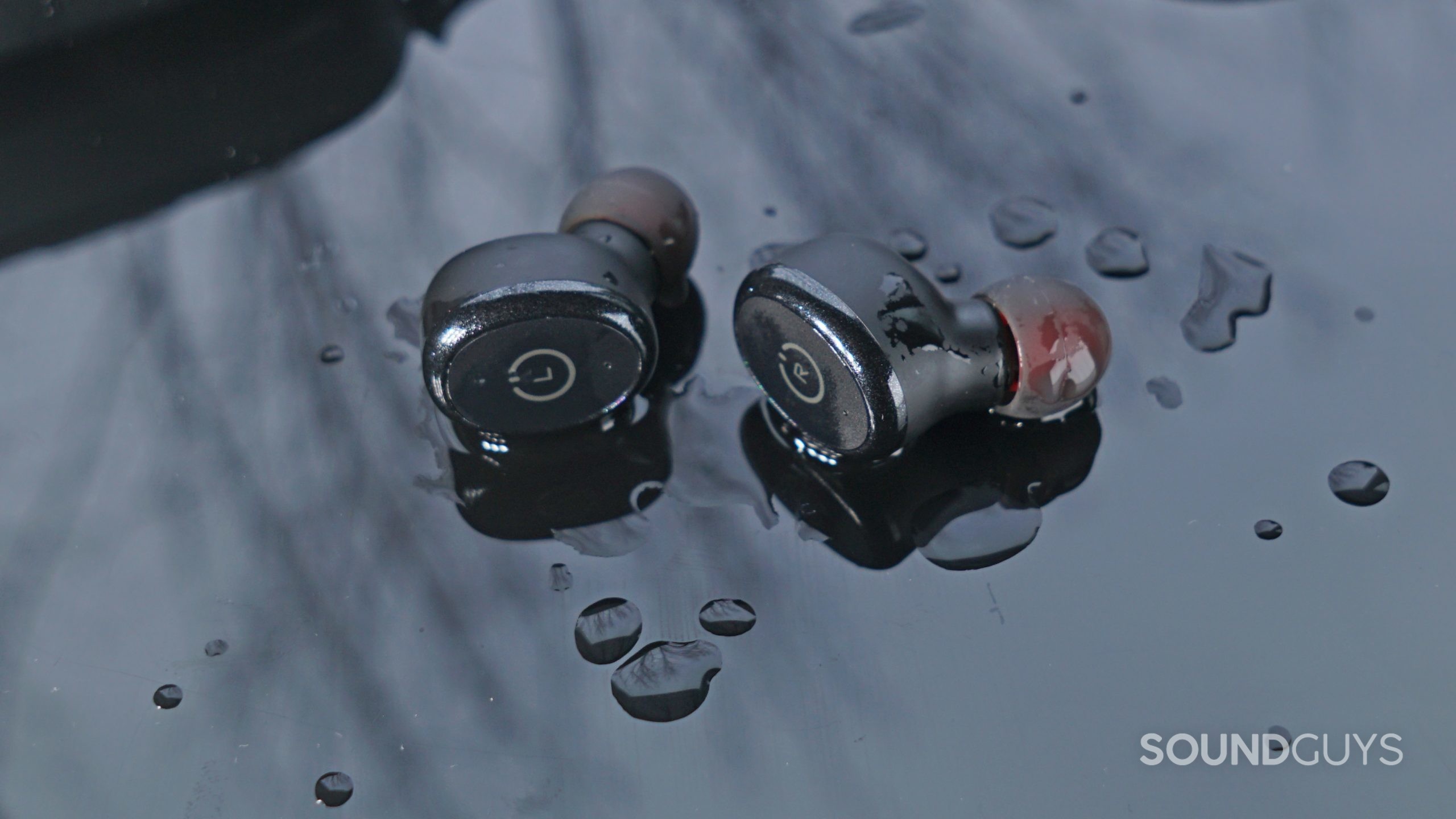
We test and measure all of our noise canceling earbuds the same way, regardless of the price tags. This includes objective measurements using our trusted Bruel & Kjaer 5128 for isolation, ANC effectiveness, and frequency response. We test battery life and microphones the same way each time, too. In essence, by repeating the same tests utilizing the same methods, we can objectively analyze the data to discover answers to questions about sound and noise cancelation.
Of course, we are all humans living in the real world, and what appears great on paper does not always work as advertised. That’s why we also tested and reviewed the earbuds on this list in actual use conditions. We want to make sure that our tests and subsequent scores inform how we choose the best.
How we choose the best cheap noise canceling earbuds
This list of the best cheap noise canceling earbuds is formed through our objective testing and through consulting the expertise of our staff. Since we review so many products, we have a fountain of collective knowledge alongside hands-on experience with these earbuds. Basically, how we choose the best does not rely on the opinion of a single individual. In addition to noise cancelling tests, we also perform objective measurements on sound quality and battery life. Our recommendations are combination of personal experience using the products, as well as objective data and scoring.
Why you should trust SoundGuys
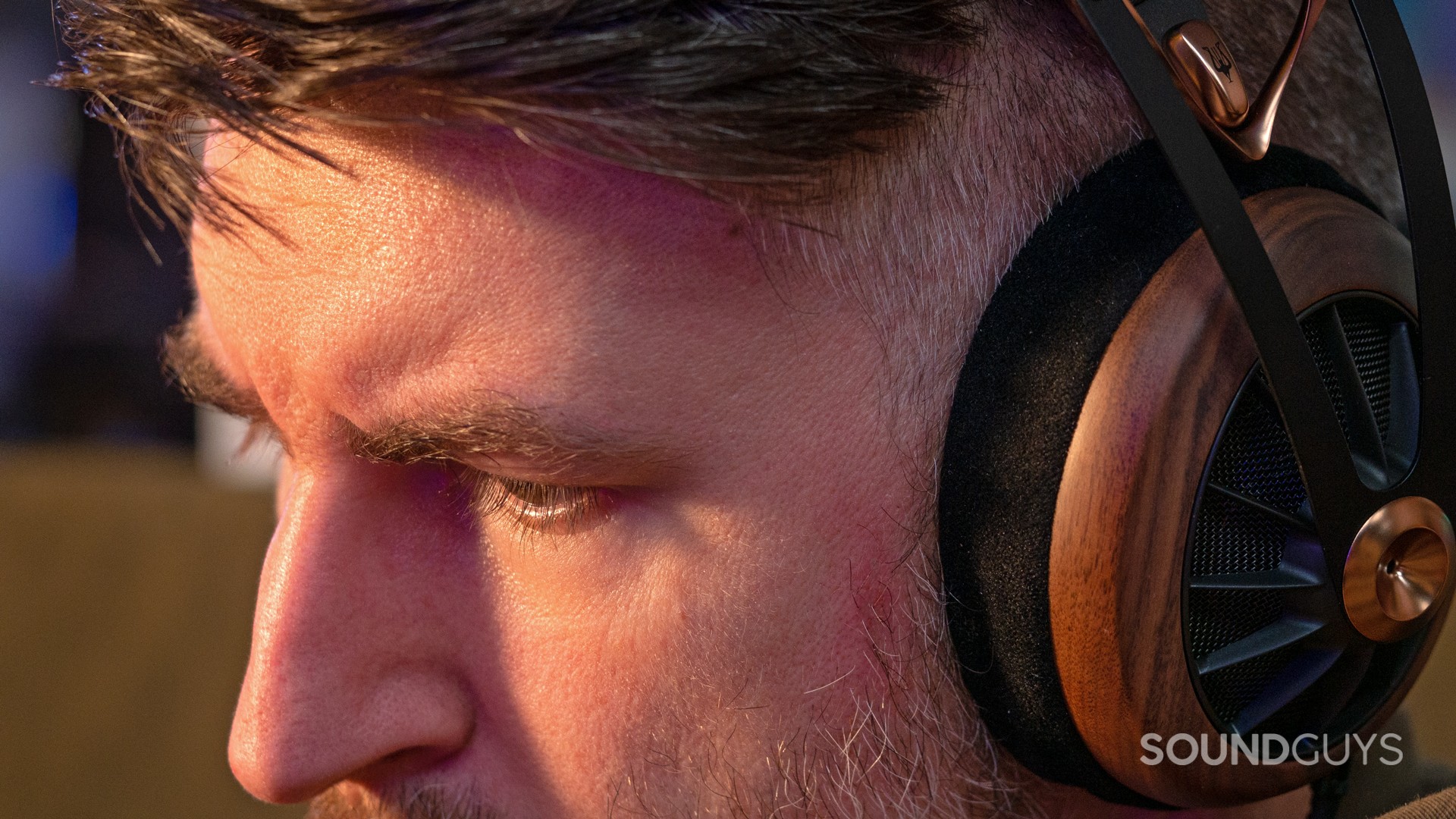
At SoundGuys, our writers are not paid to tell you to like or dislike any given product. Our team does not benefit financially from the sales of any products, and we don’t directly sell any products either. While we do have links on the site to purchase products we review or feature, and some percentage goes to SoundGuys as an operation, none of the writers or editors have any personal financial stake in whether you choose to make a purchase or not. In addition, our advertising is strictly separate from our editorial staff.
Instead, we rely on years of industry experience and accumulated knowledge when reviewing products. In effect, our writers and editors care more about sharing our knowledge and experience with you than we care about urging you to buy one product over another unless that one product is objectively better. We abide by strict ethics of journalistic integrity.
Frequently asked questions
You should expect at least an IPX4 rating against moisture most of the time on any noise canceling earbuds. Be careful if you choose to purchase earbuds with less than an IPX4 rating, and consider something more durable if you plan on exercising.
In our view, the best bang for your buck noise canceling headphones would be the Monoprice BT-600ANC, which offer great isolation, decent sound, and premium features for less than $100.
Implementing noise canceling capabilities in earbuds requires more space-consuming hardware, adding to the manufacturing costs. Wireless earbuds with ANC use multiple microphones to receive external sounds and processors to counteract them with anti-noise signals.
